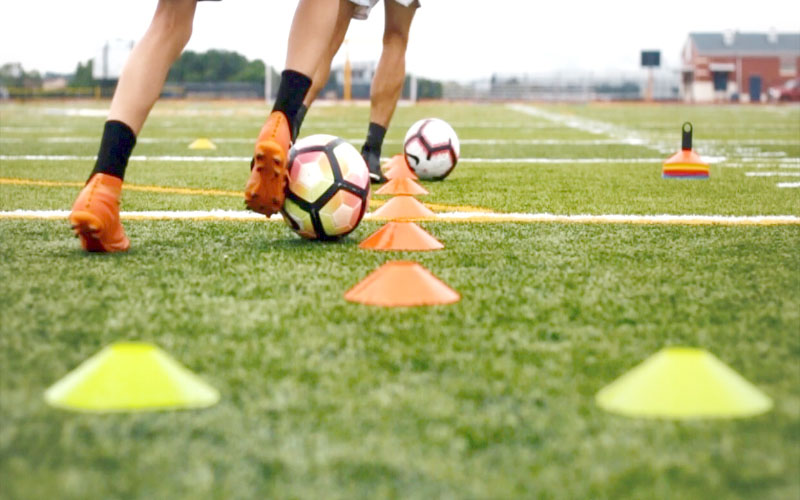Football drills are essential for any player’s training, serving to enhance skills and foster team dynamics. These structured exercises allow players to concentrate on specific game aspects, leading to improvements that directly impact performance on the pitch. Whether you’re an aspiring footballer or a seasoned pro aiming to refine your abilities, engaging in well-designed drills is vital. Through repetition, players can master everything from basic techniques to complex strategies. With a focus on both individual and collective performance, practicing the right football drills can lead to significant improvements in overall capabilities. This article will explore various football drills designed to quickly elevate your skills, highlighting their benefits, techniques, and effective training plans.
Benefits of Football Drills
Drills serve multiple purposes beyond simply enhancing technical proficiency. They provide a structured environment where players can engage in focused practice, subsequent to which observable improvements can be noted. The core benefits of football drills can be categorized into four primary areas: improving technical skills, enhancing physical fitness and endurance, developing teamwork and coordination, and building confidence and competitive mentality at Game đổi thưởng 88.
Improving Technical Skills
When dissecting the world of football, it becomes evident that technical prowess is a non-negotiable aspect of the game. Players must have a solid grasp of fundamental skills such as dribbling, passing, shooting, and defending. Engaging in targeted drills allows players to hone these techniques, transforming them from novice-level understanding into second nature reactions during matches.
Technical drills often break down complex actions into simplistic movements, giving players the opportunity to repeat these actions until they achieve mastery. For instance, practicing dribbling through cones helps players improve ball control and agility, which are vital when navigating tight spaces in real-game scenarios.
Furthermore, repetition fosters muscle memory, allowing players to execute skills instinctively without overthinking. This automaticity becomes particularly beneficial under pressure, ensuring that players can perform even when faced with high-stress conditions. Ultimately, effective drills not only enhance technical abilities but also empower players to apply those skills in dynamic match situations seamlessly.
Enhancing Physical Fitness and Endurance
Football is an incredibly demanding sport that requires athletes to be in peak physical condition. The fast-paced nature of the game necessitates a blend of speed, agility, strength, and stamina. To prepare the body for the rigors of a match, incorporating drills that emphasize physical fitness is imperative.
Conditioning drills often involve running, footwork, and agility exercises designed to elevate heart rates and build endurance. These sessions can include sprints interspersed with ball work or circuit training that integrates bodyweight exercises targeting major muscle groups. By regularly performing these drills, players not only develop the necessary cardiovascular fitness but also improve their recovery times, enabling them to maintain high energy levels throughout a match.
Moreover, enhanced physical fitness leads to improved performance metrics, such as acceleration, deceleration, and endurance during long stretches of play. As players become fitter, they gain a competitive edge, allowing them to outlast opponents and capitalize on moments of fatigue.
Developing Teamwork and Coordination
Football drills is a quintessential team sport where cooperation and synergy among players is essential for success. Drills create opportunities for teammates to learn how to communicate effectively, trust one another, and coordinate their movements on the field.
Exercises that require multiple participants foster an understanding of spatial awareness, positioning, and tactics. For example, small-sided games or possession drills encourage players to work together, developing their ability to read the game collectively. Such drills teach players when to pass, when to shoot, and where to position themselves to support their teammates.
As players navigate these exercises, they also cultivate camaraderie and team spirit, creating bonds that can positively impact the overall dynamics of the squad. A well-coordinated team, built on mutual understanding and skillful execution, is far more capable of executing intricate strategies during matches compared to a disunited group.
